- News
- Reviews
- Bikes
- Components
- Bar tape & grips
- Bottom brackets
- Brake & gear cables
- Brake & STI levers
- Brake pads & spares
- Brakes
- Cassettes & freewheels
- Chains
- Chainsets & chainrings
- Derailleurs - front
- Derailleurs - rear
- Forks
- Gear levers & shifters
- Groupsets
- Handlebars & extensions
- Headsets
- Hubs
- Inner tubes
- Pedals
- Quick releases & skewers
- Saddles
- Seatposts
- Stems
- Wheels
- Tyres
- Tubeless valves
- Accessories
- Accessories - misc
- Computer mounts
- Bags
- Bar ends
- Bike bags & cases
- Bottle cages
- Bottles
- Cameras
- Car racks
- Child seats
- Computers
- Glasses
- GPS units
- Helmets
- Lights - front
- Lights - rear
- Lights - sets
- Locks
- Mirrors
- Mudguards
- Racks
- Pumps & CO2 inflators
- Puncture kits
- Reflectives
- Smart watches
- Stands and racks
- Trailers
- Clothing
- Health, fitness and nutrition
- Tools and workshop
- Miscellaneous
- Buyers Guides
- Features
- Forum
- Recommends
- Podcast
review
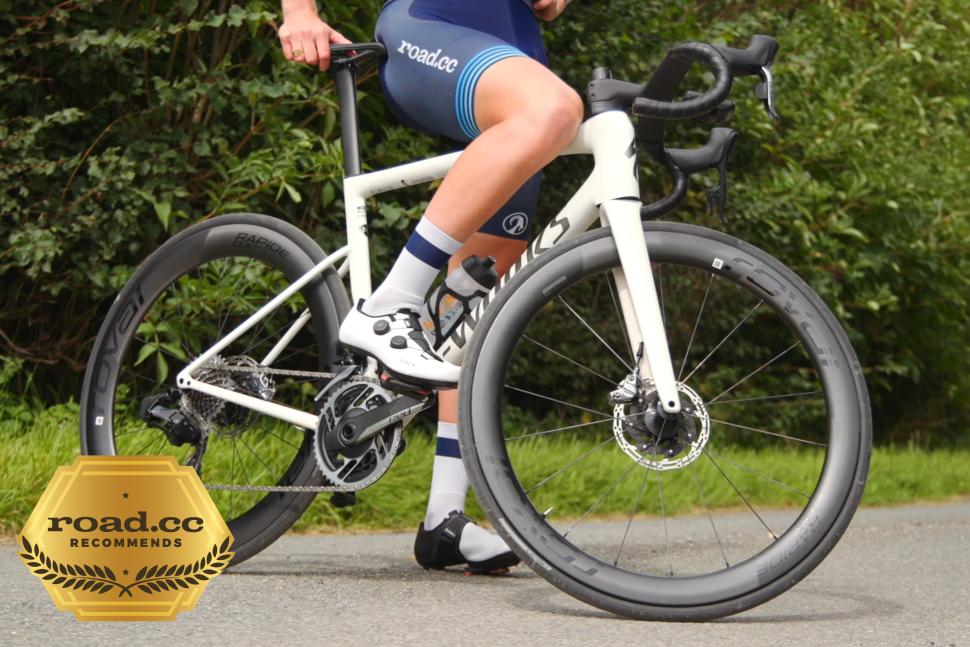 Specialized S-Works Tarmac SL8
Specialized S-Works Tarmac SL8£12,000.00
VERDICT:
Narrowing in on perfection - this is the new race bike benchmark
It really is stupidly light!
Excellent geometry
It's a proper do-it-all race bike
The price...
Weight:
6,940g
Contact:

This product has been selected to feature in road.cc recommends. That means it's not just scored well, but we think it stands out as special. Go to road.cc recommends
At road.cc every product is thoroughly tested for as long as it takes to get a proper insight into how well it works. Our reviewers are experienced cyclists that we trust to be objective. While we strive to ensure that opinions expressed are backed up by facts, reviews are by their nature an informed opinion, not a definitive verdict. We don't intentionally try to break anything (except locks) but we do try to look for weak points in any design. The overall score is not just an average of the other scores: it reflects both a product's function and value – with value determined by how a product compares with items of similar spec, quality, and price.
What the road.cc scores meanGood scores are more common than bad, because fortunately good products are more common than bad.
- Exceptional
- Excellent
- Very Good
- Good
- Quite good
- Average
- Not so good
- Poor
- Bad
- Appalling
The Specialized S-Works Tarmac SL8 claims to be lighter, faster, stiffer and more comfortable than the SL7, a bike that was already world-class. Two months with the range-topping SRAM Red eTap AXS model certainly didn't fail to impress – the competition once again has some catching up to do!
If you read our launch story and first ride review of the SL8, you'll already know the new Tarmac is very similar to the bike it replaces, the Tarmac SL7. The geometry is all but identical, the looks are very similar, and it's still designed to be the 'one bike to rule them all.'
The key changes over the SL7 are that the frame is 120g lighter, the complete bike seen here has a new cockpit, there's a claimed 6% improvement in rear compliance, it's allegedly a few Watts faster at race speed, and it's yet stiffer.
Like the SL7, the latest Tarmac comes in S-Works, Pro and Expert models. The top-of-the-range S-Works frame benefits from the most advanced carbon layup, and hence the lowest weight (more on that in a minute).
The S-Works frame is available either with Shimano Dura-Ace or the SRAM Red AXS build that we have here. These have claimed weights of 6.6kg and 6.8kg respectively, and both will set you back a cool £12,000. That might sound like a kick in the teeth, but it's actually less than the current top-of-the-range SL7 or Aethos. You can also go for just the S-Works SL8 frameset, which will set you back £4,750.
Weight
We weighed our size 56cm review bike at 6.94kg, which makes it one of the lightest to grace our scales in recent years. It's a little heavier than the 6.8kg claimed weight but, given that our review bike had an out-in-front computer mount and one of the heavier colour schemes (around 40/50g over the lightest), it seems reasonable.
For me the frame weight of just 680g is the most impressive SL8 statistic, and given that it's 120g (or 15%) lighter than the already very competitive SL7, it's better than nearly all of us predicted – or thought possible.
At 680 grams it's 90g lighter than the LAB71 Cannondale SuperSix Evo 4, and 50g lighter than the Factor 02 VAM which claims to be the 'world's fastest climbing bike'.
Given the accompanying stiffness, compliance and aero claims, the frame weight is quite the feat of engineering. But as with all superlight bikes, I am left questioning the real-world impact. Specialized's own figures suggest that you'd be just 20 seconds quicker over the Tourmalet; a worthwhile advantage if you're a World Tour pro, but less important if you're an amateur who rarely finds themselves beasting the world's most brutal climbs.
I'd personally look to save myself the best part of two grand and take a 100g hit with the non-S-Works frame. It is, after all, still lighter than the SL7 and just 10g heavier than the LAB71 SuperSix.
In conclusion, then, the low weight is extremely impressive, but certainly not the reason I'd consider buying this bike.
Speed
Without a wind tunnel, it's impossible to validate Specialized's claims that the new SL8 is 16.6 seconds quicker over 40km, but it doesn't seem unrealistic given the new aero headtube shaping and the integrated bar/stem. The 16.6-second saving amounts to around eight Watts at 45kph, with around half coming from the bar/stem and half from the frame itself.
Specialized has an almost unfair advantage when it comes to aero research, as it's got both a supercomputer for CFD (computational fluid dynamics) simulations and a wind tunnel for testing prototypes and final bikes.
Out on the road, the SL8 feels every bit the race bike, and is up there with the fastest on my regular testing loop.
Geometry
Despite supposedly being a new bike from the ground up, the S-Works SL8 is clearly more evolution than a revolution. In my opinion, that's no bad thing.
The SL7 is a bike I got on with really well, as I found in our comparison of the SL7, the Pinarello Dogma F, the Cervelo S5 and the Colnago V4Rs. The Specialized's geometry, for one thing, really works for me.
Just like the SL7, the SL8 has a race-proven geometry, so as you'd expect it's pretty aggressive with a long and low position. This 56cm frame has a 73.5-degree head and seat tube angle, with stack and reach measurements of 565mm and 395mm respectively. This gives quick steering that's more than capable of nailing a twisty criterium race, yet enough stability for those wild top speeds down an Alpine pass.
Note that this is a thoroughbred race bike designed for flexible riders who're well used to spending time in low, heavily-tucked positions. Even compared to other race bikes the SL8 is on the aggressive side: for example, the Colnago V4RS is hardly a shopping bike and yet has a 7mm taller head tube, a 10mm greater stack height, and a one degree slacker front end.
When using the bike for its intended purpose it feels very balanced and, thanks to the handling being very precise, you can carry a lot of speed into the corners. Sometimes very light, stiff bikes can feel a little 'flighty' over rough road surfaces at high speed, but the Tarmac never really does.
Ride feel continued...
And that brings us to compliance, because this is another area that the SL8 claims to have improved. In the saddle, you might not initially notice the 6% improvement in rear compliance, but after three hours or so in the saddle, you'll likely be thankful for it.
You might be thinking, 'But this is a race bike, why do I need it to be comfortable?' Well, the answer is of course speed. The Specialized engineers explained to me that the additional compliance is in direct response to the pro team's feedback; they want to ride grand tours on 26mm tyres without getting beaten up.
You might think this change would be right up my annoyingly bumpy street. However, it's a tricky one to test when the change is so small.
On its stock setup (26mm RapidAir tyres and butyl tubes) the SL8 offers roughly the same comfort as the SL7 on 28mm Vittoria Corsa G2.0s with latex tubes. I did a few back-to-back long rides switching the wheels and tyres between bikes, and will say that with both frames on the same wheels and tyres, the difference is noticeable – albeit subtle.
However, riding both bikes on both sets of tyres showed that you shouldn't expect to find this new 6% change as noticeable as you would find a tyre or tube upgrade.
Stiffness
I'll be the first to admit that I never had a problem with the stiffness of the SL7. It was more than capable of coping with my sprints, which are by no means pro-level at around 1,200 Watts.
However, to my surprise, the most noticeable improvement here the extra stiffness around the bottom bracket, as it makes other bikes feel plain dull. Out of the saddle this bike feels electric; obviously the low weight only helps with this addictive feeling, but it's that stiffness which really makes the bike.
With so much material removed from this area I can't even begin to guess how Specialized has done it, and to be honest I don't really care. The result is a bike which wants to be thrashed up hills; it made me want to sprint against my mates at the tops of climbs, and it made me feel that all my pain and graft were being turned into forward motion.
The one word I'd use to describe the bike as a whole is 'direct' – a surprise to me, really, given it has such a compliant rear end.
Finishing kit and components
As previously mentioned, this S-Works model sits at the top of the tree in terms of frame tech and components. And wearing a SRAM Red eTap AXS drivetrain, Roval Rapide CLX II wheels and a Roval Rapide cockpit, there's nothing short of top tier.
Red eTap AXS has been around for some time now, but remains a high-quality, performance-orientated groupset. I won't delve too deep into the pros and cons of the 12-speed wireless system here, as we've gone into eTap in depth already, but what I will say is that the gearing is actually a sound choice.
A 10-33T cassette on the back and a 48/35 chainset up front might sound small for an out-and-out race bike like this, but we're not all pros; for the majority of riders and terrain, it's great. The 12-speed range is very impressive and will easily cover you for everything from laid-back endurance rides to hard race efforts, while the biggest gear offers a taller ratio than a 52Tx11T could on a 2x11-speed.
Of course, if you require more gears in either direction then SRAM caters for that with a multitude of chainring sizes and a wider-range cassette.
Although I'm a big fan of SRAM Red it's worth noting that the Dura-Ace Di2 model costs the same; is also 12-speed; results in a bike that is 200g lighter (more bragging rights at the cafe); and is unlikely to be superseded as quickly given that it was only released last year.
Whichever you choose though a power meter is included in the price, as you should rightly expect from a bike costing this much.
Wheels
The Roval Rapide CLX II wheels are 51mm and 60mm deep front and rear respectively, and tubeless-ready too – although they ship with butyl inner tubes. If I were to purchase an SL8 the tubes would be the first thing to go: in my opinion, they have no place on a £12k superbike.
The wheels are excellent and have repeatedly been shown (by us and others) to be some of the fastest in the world. I've also been impressed with the stability from by the super-wide front wheel. If you're a weight weenie or climber then you may want to look at alternatives, but the majority – from weekend warriors to World Tour sprinters – will be very happy with the weight, aerodynamic performance and behaviour of the Rovals.
The seatpost is proprietary and available in 0mm and 15mm setbacks. Although it looks very similar to that on the SL7 and Allez Sprint, it is in fact a few millimetres narrower for improved aerodynamics. The downside is it's no longer large enough to house a Di2 battery, though that now clips onto the bottom (a neat solution).
The handlebar is also from Roval, and whereas the Expert and Pro models get a conventional bar and stem, the S-Works gets a new integrated cockpit.
The benefits are lower weight, improved stiffness and (according to Specialized) a roughly 4W drag saving at 45kph. The main drawback of a system like this is obviously the lack of adjustability, though, so make sure you've got the right one fitted before walking out the shop!
The tyres are also top end: S-Works Turbo RapidAir 2Bliss Ready. It'd be better if they arrived set up 2Bliss Already, but then I would personally consider switching from 26mm widths to 28mm anyway. The rear-end compliance does a good job of taming the abysmal UK roads as-is, but going a little wider brings even more comfort at the expense of very little. Wider rubber also helps protect that very wide front rim from potential stone strikes.
Other components of note are the Supercaz bar tape (which performs well and has been a regular on S-Works bikes for some time now), and an S-Works Power carbon saddle. Again, that's a classy bit of kit.
So the finishing kit is top tier and there's no skimping on componentry whatsoever. This is as good as it gets when buying a bike off the shelf!
Value
How does this £12,000 bike stack up against the competition? Luckily, we've already reviewed quite a lot of this year's peloton-ready machines, so let's see.
The Colnago V4RS is a natural competitor but, with an RRP £999 higher, it's hard to overlook the fact it's also heavier and doesn't feel as nimble.
The Pinarello Dogma F Super Record EPS is also more expensive at £12,400, though I had the pleasure of riding that one too and it was indeed superb. Although the complete build is a very similar weight to the SL8, that's largely thanks to the very light Campagnolo Hyperon wheels, and they're unlikely to be as aero as the Rovals given their much shallower depth. It's also worth noting that you don't get a power meter with the Pinarello.
There are World Tour bikes that can compete with the SL8 on value, though: the Scott Foil RC Pro doesn't include a power meter either, but is a fair bit cheaper to start with at £10,499. Once again it is heavier, mind you.
At £12,000 this is way beyond the reach of all but the wealthy few, but nevertheless the S-Works SL8 is more worthy of this price tag than most. The sensible(ish) money would undoubtedly be spent on something further down the range, but if you're after the pinnacle of bike technology, the SL8 has to be high up the list.
If you're not, then the SL8 Pro is the one I'd go for. The frame is only marginally heavier and claims to have the same performance in every other regard, you still get Roval Rapide wheels with the same rims (albeit different hubs), and the SRAM Force or Ultegra R8170 groupset options are both excellent. And at £8,000 it's fully £4,000 cheaper.
Overall
I keep coming back to the Tarmac SL7 and for good reason: it's still one of the best road race bikes in the world. The SL8 is quite simply better, albeit marginally, in just about every way.
It's undeniably lighter, it's undeniably fast and the simultaneous improvements in stiffness and compliance – which may well sound like familiar marketing waffle – are small but undeniably there. They have real-world benefits to the ride feel, and edge the Tarmac closer to race bike perfection. This is surely the bike to beat in 2024, and to my mind it's the best race bike in the world right now. Your move, everyone else!
Verdict
Narrowing in on perfection - this is the new race bike benchmark
road.cc test report
Make and model: Specialized S-Works Tarmac SL8 - SRAM Red eTap AXS
Size tested: 56, 563mm
About the bike
List the components used to build up the bike.
Frame: S-Works SL8 FACT 12R
Saddle: Body Geometry S-Works Power, carbon fibre rails, carbon fibre base
Handlebars/Stem: Roval Rapide Cockpit, Integrated Bar/Stem
SeatPost: S-Works Tarmac SL8 Carbon seat post, FACT Carbon, 15mm offset
Tape: Supacaz Super Sticky Kush
Fork: S-Works FACT 12r Carbon, 12x100mm thru-axle, flat-mount disc
Inner Tubes: Turbo Ultralight, 60mm Front, 80mm Rear, Presta valve
Wheels: Roval Rapide CLX II, Tubeless
Tyres: S-Works Turbo Rapidair 2BR, 700x26mm
BB: SRAM DUB BSA 68
Groupset: SRAM RED eTAP AXS, 12-speed
Power Meter: SRAM RED AXS Power Meter
Cassette: SRAM RED XG-1290, 12-speed, 10-33t
Chainrings: 48/35T
Tell us what the bike is for and who it's aimed at. What do the manufacturers say about it? How does that compare to your own feelings about the bike?
Specialized says "Nothing is faster than the Tarmac SL8 thanks to a combination of aerodynamics, lightweight, and ride quality previously thought impossible. After eight generations and over two decades of development, it's more than the fastest Tarmac ever - it's the world's fastest race bike".
In my opinion, Specialized has been successful in creating an excellent race bike, although we are unable to validate whether it is the outright fastest.
Where does this model sit in the range? Tell us briefly about the cheaper options and the more expensive options
This SRAM Red AXS S-Works model sits at the top of the range alongside the S-Works Dura-Ace model, which also costs £12,000. The Pro models weigh in at a smidge over the UCI weight limit at 7.2kg and 7.4kg respectively for the Shimano Ultegra 12-speed Di2 and SRAM Force AXS models. They will set you back £8,000 for the full bikes. The cheapest SL8 builds are the £6,000 Expert models with SRAM Rival AXS and aluminium bars and stem.
Frame and fork
Overall rating for frame and fork
9/10
Tell us about the build quality and finish of the frame and fork?
The build quality looks and feels very good. The internal surfaces of the frame are tidy, the paintwork is immaculate.
Tell us about the materials used in the frame and fork?
FRAME S-Works Tarmac SL7 FACT 12r Carbon, Rider First Engineered, Wind Tunnel Engineered, Clean Routing, Threaded BB, 12x142mm thru-axle, flat-mount disc
FORK S-Works FACT Carbon, 12x100mm thru-axle, flat-mount disc
Tell us about the geometry of the frame and fork?
The geometry is very similar to the Tarmac SL7; the 73-degree seat tube and head tube are not uncommon for race bikes, and you can expect a low, aggressive position.
How was the bike in terms of height and reach? How did it compare to other bikes of the same stated size?
As a race bike it has aggressive geometry. Stack and reach are 565mm and 395mm respectively; lower and longer than the Colnago V4RS, for example, but similar to other world tour bikes.
Riding the bike
Was the bike comfortable to ride? Tell us how you felt about the ride quality.
Ride comfort is very impressive for a bike of this nature. Over the last decade or so race bikes have been getting more compliant and less rattly, and the SL8 is a continuation of this. Comfort could be improved further by switching the 26mm tyres and butyl inner tubes for something wider and more supple. The carbon S-Works Power saddle is highly regarded and should suit the majority of potential riders.
Did the bike feel stiff in the right places? Did any part of the bike feel too stiff or too flexible?
An excellent balance of compliance and stiffness. The bottom bracket stiffness is the biggest surprise, and it makes the bike feel brilliant on the climbs.
How did the bike transfer power? Did it feel efficient?
Excellent.
Was there any toe-clip overlap with the front wheel? If so was it a problem?
Yes, as I find with most race bikes of this ilk. It's a necessary evil to get the desired geometry.
How would you describe the steering? Was it lively neutral or unresponsive? Positive and direct - it's a lively bike but stable enough on fast descents.
Tell us some more about the handling. How did the bike feel overall? Did it do particular things well or badly?
The handling is great. The steering is quick and very precise, which makes descending at speed a joy.
Which components had the most effect (good or bad) on the bike's comfort? would you recommend any changes?
I'd go tubeless, though the tyres themselves are a sound choice, as is the saddle.
Which components had the most effect (good or bad) on the bike's stiffness? would you recommend any changes?
The frame is very impressive, the wheels are class-leading and the new bar/stem is great.
Which components had the most effect (good or bad) on the bike's efficiency? would you recommend any changes?
The wheels are very aero, and the new cockpit claims to save four Watts, which if true is impressive.
Rate the bike for efficiency of power transfer:
10/10
Rate the bike for acceleration:
10/10
Rate the bike for sprinting:
9/10
Rate the bike for high speed stability:
9/10
Rate the bike for cruising speed stability:
10/10
Rate the bike for low speed stability:
8/10
Like any race bike, this is not the main goal.
Rate the bike for flat cornering:
9/10
Rate the bike for cornering on descents:
9/10
Rate the bike for climbing:
10/10
The drivetrain
Rate the drivetrain for performance:
10/10
Rate the drivetrain for durability:
9/10
Rate the drivetrain for weight:
8/10
One of the lightest electronic offerings available - the Dura-Ace Di2 model is 200g lighter still, though.
Rate the drivetrain for value:
4/10
Wheels and tyres
Rate the wheels for performance:
9/10
Rate the wheels for durability:
9/10
Rate the wheels for weight:
8/10
The first generation (non tubeless) were lighter.
Rate the wheels for comfort:
9/10
Rate the wheels for value:
8/10
Tell us some more about the wheels.Did they work well in the conditions you encountered? Would you change the wheels? If so what for?
These would be my first pick; they're light, fast and stable. They're excellent for flat rides, sprints and climbing or rolling terrain and can be run tubeless.
Rate the tyres for performance:
8/10
Rate the tyres for durability:
8/10
Rate the tyres for weight:
8/10
Rate the tyres for comfort:
8/10
Rate the tyres for value:
7/10
Tell us some more about the tyres. Did they work well in the conditions you encountered? Would you change the tyres? If so what for?
They're good tyres, although wouldn't be my very first choice. I'd personally go for something a little wider at 28mm. I'm a big fan of Continental GP5000S TRs and Vittoria Corsa Pros.
Controls
Rate the controls for performance:
9/10
Rate the controls for durability:
9/10
Rate the controls for weight:
9/10
Rate the controls for comfort:
9/10
Rate the controls for value:
5/10
Anything else you want to say about the componentry? Comment on any other components (good or bad)
Specialized has left no stone unturned with component choice, and it shows. Each one, even down to the bar tape, feels as though it's been picked with purpose by someone who actually rides bikes. I'm a fussy bugger but was happy with all the choices made.
Your summary
Did you enjoy riding the bike? Absolutely yes!
Would you consider buying the bike? Yes
Would you recommend the bike to a friend? Yes
How does the price compare to that of similar bikes in the market, including ones recently tested on road.cc?
It's a lot of money – though less than many predicted, if that counts for anything – and actually cheaper than the previous generation. It stacks up well against its competition, and in many cases is lighter and slightly cheaper. There are a few options which cost less, but none that can absolutely match this in every area.
Rate the bike overall for performance:
9/10
Rate the bike overall for value:
5/10
Use this box to explain your overall score
A stunning feat of engineering. Although the bike seems like an evolution rather than a revolution it means that one of the best just got a little bit better, this really is a racebike that can take on any road race.
About the tester
Age: 23
I usually ride: Specialized venge pro 2019 My best bike is:
I've been riding for: Under 5 years I ride: Every day I would class myself as: Expert
I regularly do the following types of riding: road racing, time trialling, cyclo cross, commuting, club rides, sportives, general fitness riding, mtb,
Jamie has been riding bikes since a tender age but really caught the bug for racing and reviewing whilst studying towards a master's in Mechanical engineering at Swansea University. Having graduated, he decided he really quite liked working with bikes and is now a full-time addition to the road.cc team. When not writing about tech news or working on the Youtube channel, you can still find him racing local crits trying to cling on to his cat 2 licence...and missing every break going...
Latest Comments
- brooksby 3 min 36 sec ago
Or turning that on its head: the aforementioned paint can can cause harm if it is *accidentally* damaged or is otherwise used in a way for which it...
- eburtthebike 4 hours 31 min ago
A comedian with a purpose can achieve more than the politicians e.g. Zelesky.
- Hirsute 6 hours 7 min ago
Sounds a bit specific though given 90% are bought on some sort of finance.
- Rekrab 6 hours 25 min ago
MORE LANES, MORE LANES!!!!
- Simon E 6 hours 32 min ago
The numbers don't tell anything like the whole story....
- Simon E 7 hours 3 min ago
Just squirt some thick grease all over his side windows and door panels. If you're feeling really uncharitable you could throw some sand at the...
- David9694 7 hours 42 min ago
check under 'W'for "What cars do to people"
- Global Nomad 8 hours 24 min ago
good to see you're testing the farsports wheels - hope to see road.cc continue to expand the range of brands it considers. These or the shallower...
- chrisotherwise 8 hours 58 min ago
Sadly very normal. And the sand contains loads of evil little shards of flint.























































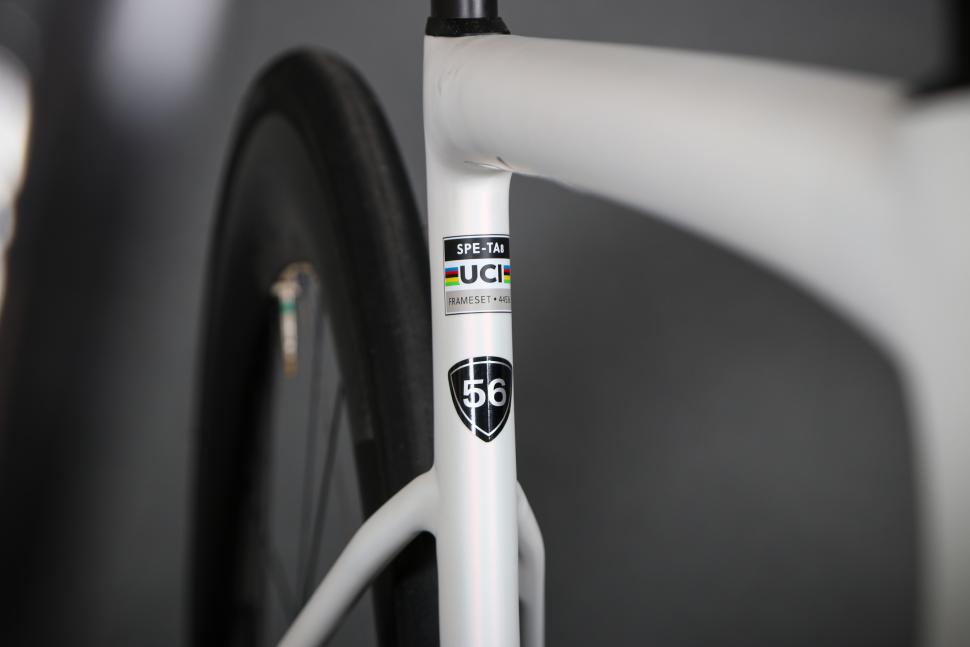




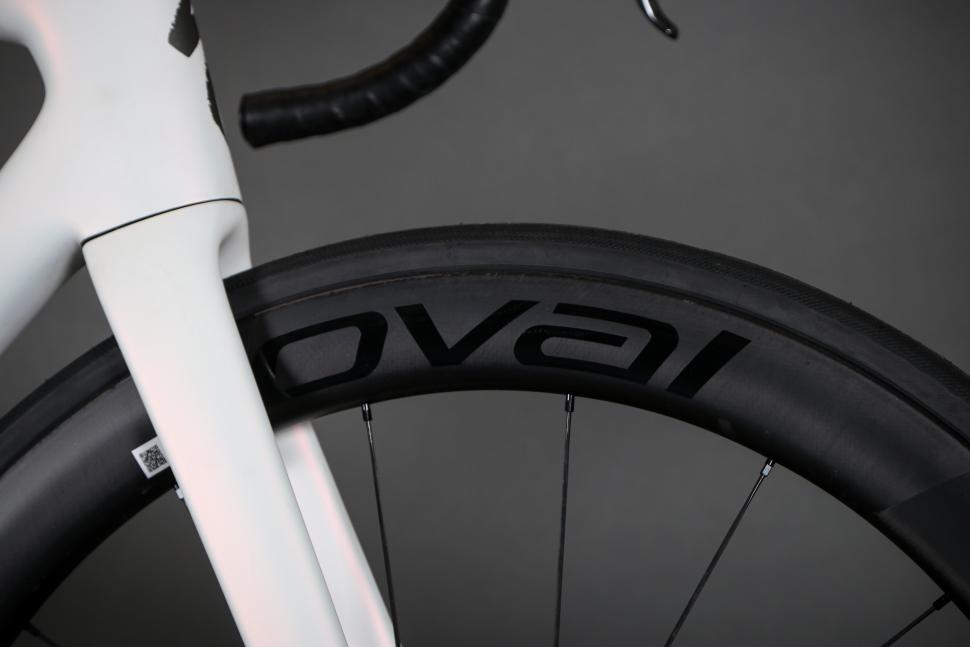

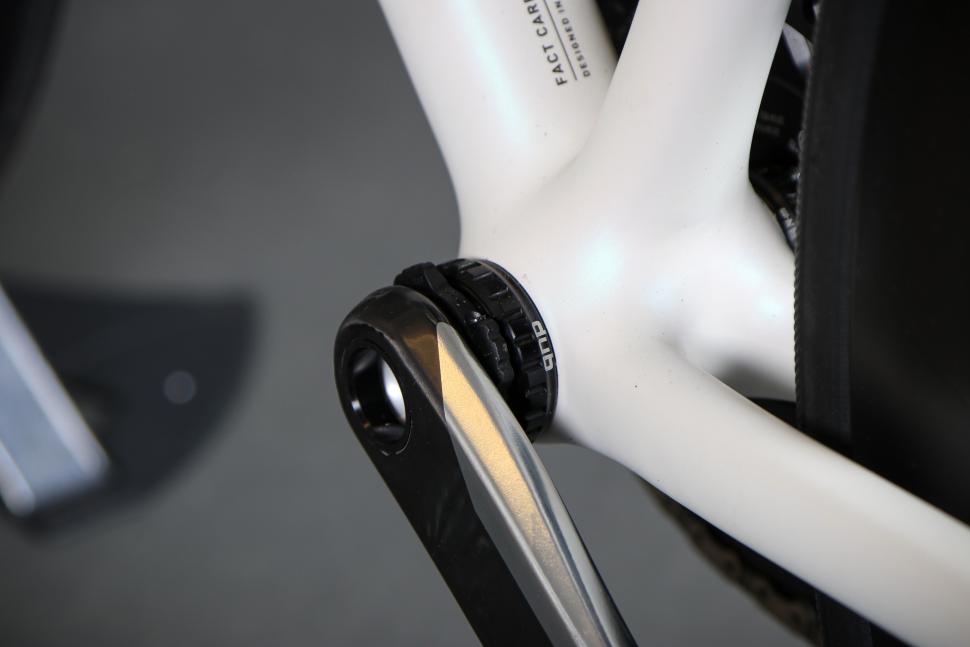
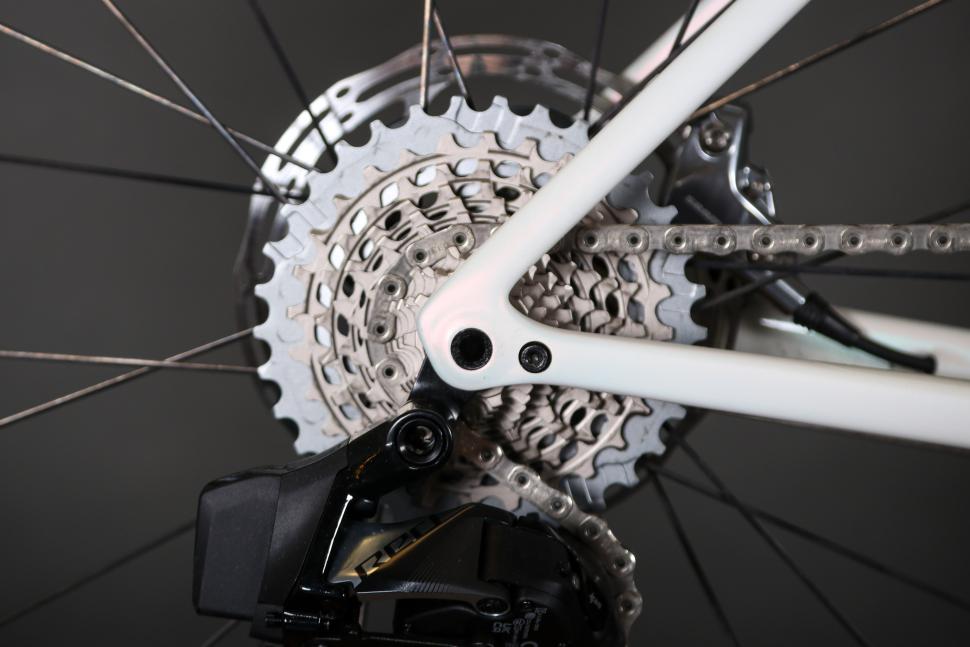
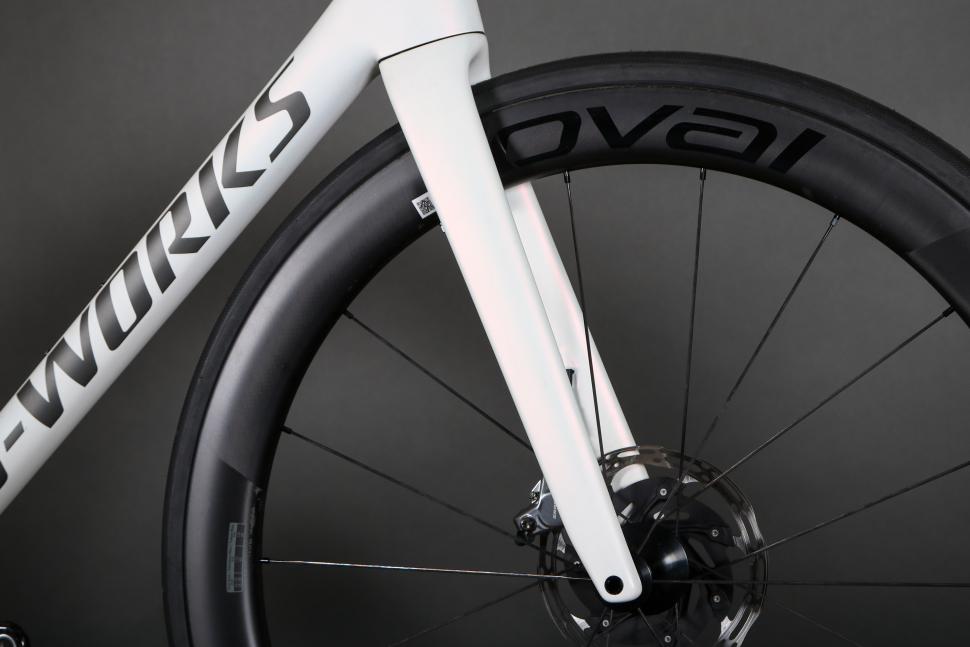
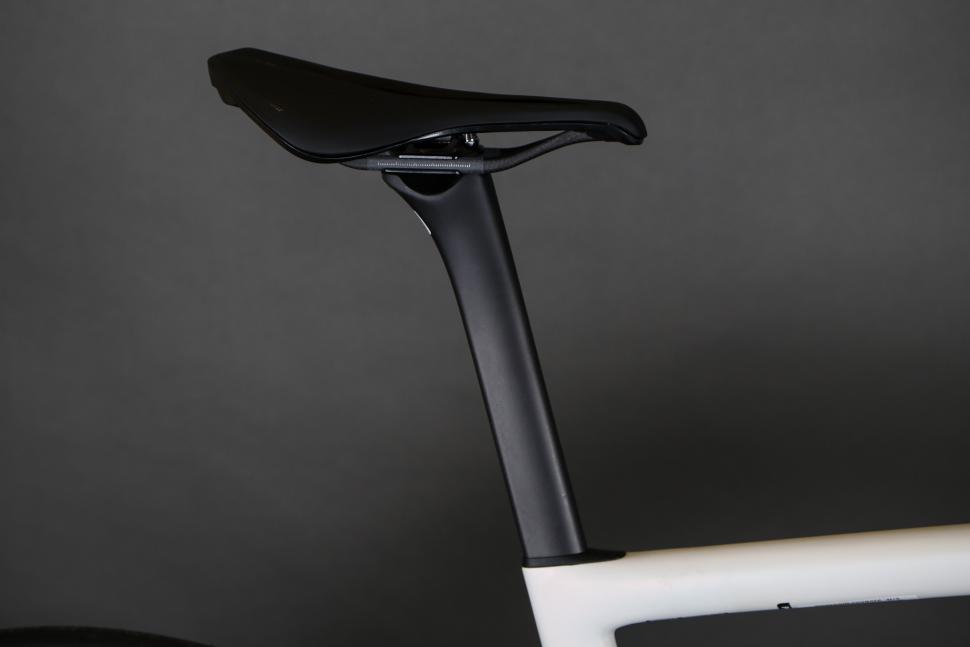



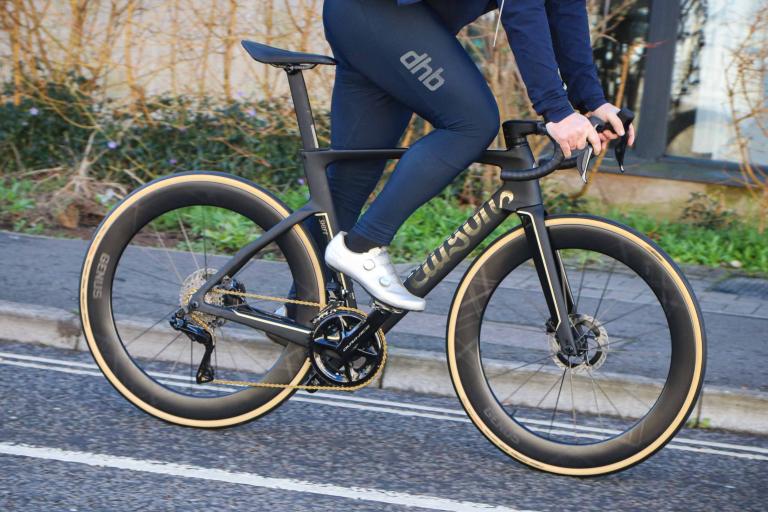
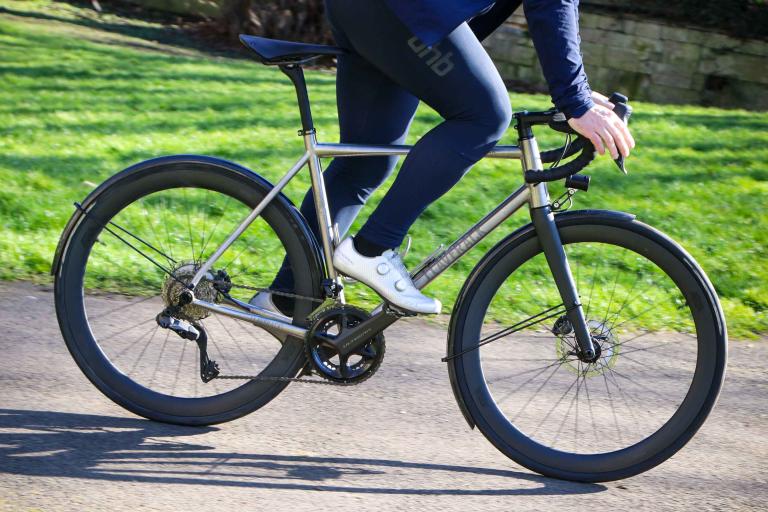

Add new comment
5 comments
£12000 for a 'stupidly light' bike that is still over 6.8 kg? You're right, only a stupid person would pay this much for a bike that claims to be light but can't even touch the UCI limit. Bikes don't need to be light, but if you're going to claim it is at least attempt to make it so.
The bike can easily touch the UCI limit. My SL8 is 5.85kg with pedals, cages and computer mount (albeit not a stock build). As the review also points out, the 'standard' dura ace version is 200g lighter and the same price (I can't see why anyone would go for AXS really, as it is quite dated now compared to 12s Di2). What Specialized have achieved better than competitors is a genuinely light bike designed for pros that doesn't make aerodynamic compromises to get to the light weight (the Rovals are not light wheels). For example, the Factor O2 VAM is similarly marketed as an all round aero / lightweight bike and is a similar price. However it is much less aero, and much of the light weight is achieved through shallow climbing wheels. It is easy to pour hate on Specialized as the 800 pound gorilla of the bike world, but a 680g disc brake frame that is stiff and properly aerodynamic is quite some technical achievement IMO.
Yes, what you want for pro racing is a hyper light bike, made of delicate and exotic AX Lightness, Schmolke, etc. components, with insane torque tolerances and questionable durability.
Although £12k for a bike is nuts. Surely anyone could build it themselves from frame + bits for less.
Frameset : £4750, Cockpit : £475, Wheelset : £2050 (on sale at Certini) Di2 Groupset : £2,600 (on sale at Sigma). Tires : circa £120, Saddle circa £160. Tape, tubes etc., probably no more than £50. So, yes agree, you could definitely start with the frameset and build for quite a lot less, even if you paid for the build (£200 ish).
That Enve road frame is heavier & costs more if you're looking for context?